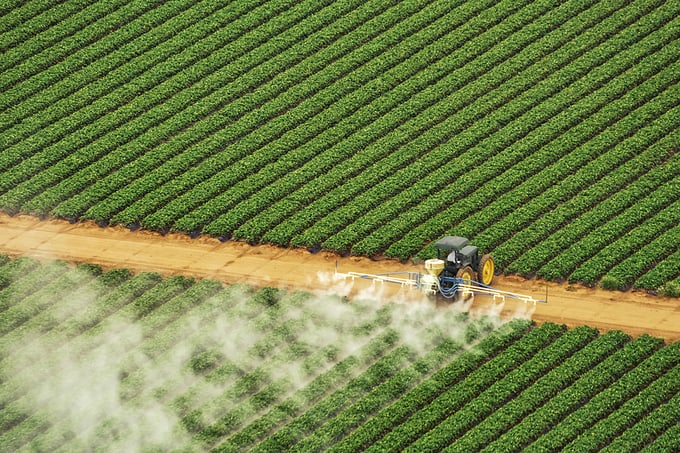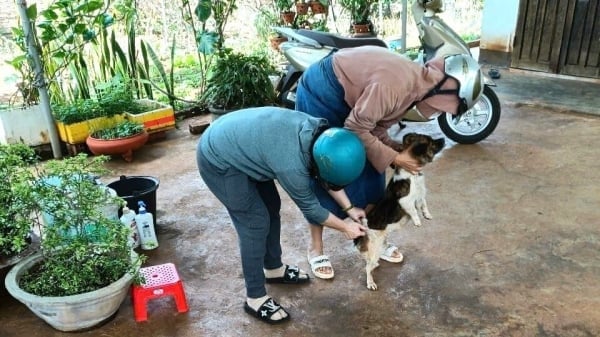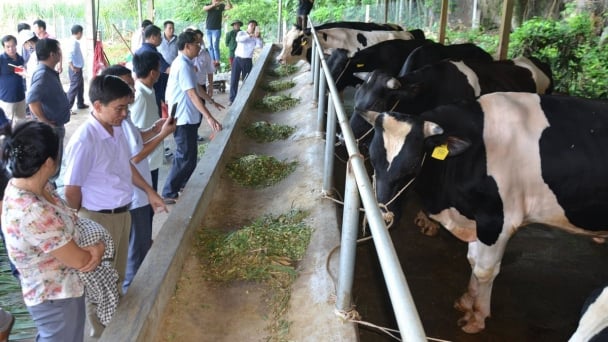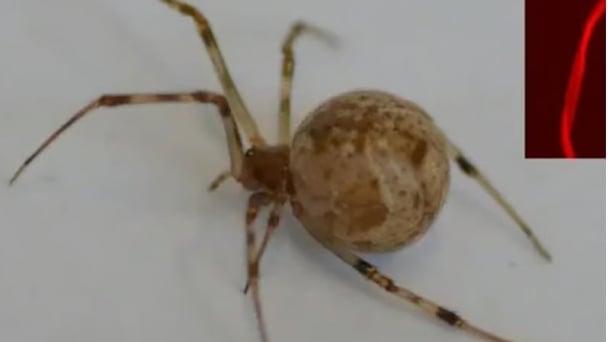May 21, 2025 | 21:26 GMT +7
May 21, 2025 | 21:26 GMT +7
Hotline: 0913.378.918
May 21, 2025 | 21:26 GMT +7
Hotline: 0913.378.918

An innovation from Stanford researchers could revolutionize how crops are fertilized, by drastically reducing the amount of energy and emissions that result from fertilizer production. | Getty Images.
The air around us contains a powerful solution for making agriculture more sustainable. Researchers at Stanford University and King Fahd University of Petroleum and Minerals in Saudi Arabia have developed a prototype device that can produce ammonia – a key fertilizer ingredient – using wind energy to draw air through a mesh. The approach they developed, if perfected, might eliminate the need for a century-old method that produces ammonia by combining nitrogen and hydrogen at high pressures and temperatures. The older method consumes 2% of global energy and contributes 1% of annual carbon dioxide emissions from its reliance on natural gas.
The study, published Dec. 13 in Science Advances, involved the first on-site – rather than in a lab – demonstration of the technology. The researchers envision someday integrating the device into irrigation systems, enabling farmers to generate fertilizer directly from the air.
“This breakthrough allows us to harness the nitrogen in our air and produce ammonia sustainably,” said study senior author Richard Zare, the Marguerite Blake Wilbur Professor in Natural Science and professor of chemistry in the Stanford School of Humanities and Sciences. “It’s a significant step toward a decentralized and eco-friendly approach to agriculture.”
In preparation for designing their device, the researchers studied how different environmental factors – like humidity, wind speed, salt levels, and acidity – affect ammonia production. They also looked at how the size of water droplets, the concentration of the solution, and the contact of water with materials that do not dissolve in water impact the process. Lastly, they tested the best mix of iron oxide and an acid polymer with fluorine and sulfur to determine the ideal conditions for producing ammonia and understand how these catalyst materials interact with water droplets.
The Stanford team’s process makes ammonia cleanly and inexpensively and utilizes the surrounding air to get nitrogen and hydrogen from water vapor. By passing air through a mesh coated with catalysts to facilitate the necessary reaction, the researchers produced enough ammonia with a sufficiently high concentration to serve as a hydroponic fertilizer in greenhouse settings. Unlike traditional methods, the new technique operates at room temperature and standard atmospheric pressure, requiring no external voltage source to be attached to the mesh. Farmers could run the portable device onsite, eliminating the need to purchase and ship fertilizer from a manufacturer.
“This approach significantly reduces the carbon footprint of ammonia production,” said study lead author Xiaowei Song, a chemistry research scientist at Stanford.
In laboratory experiments, the team demonstrated further potential by recycling water through a spraying system, achieving ammonia concentrations sufficient to fertilize plants grown in a greenhouse after just two hours. By incorporating a filter made from a microporous stone material, this approach could produce enough ammonia to support broader agricultural applications.
The device is two to three years away from being market-ready, according to study co-author Chanbasha Basheer of King Fahd University of Petroleum and Minerals. In the meantime, the researchers plan to use increasingly large mesh systems to produce more ammonia. “There is a lot of room to develop this,” Basheer said.
Ammonia’s importance extends beyond fertilizers. As a clean energy carrier, it can store and transport renewable energy more efficiently than hydrogen gas due to its higher energy density. The innovation positions ammonia as a linchpin in decarbonizing industries like shipping and power generation.
“Green ammonia represents a new frontier in sustainability,” Zare said. “This method, if it can be scaled up economically, could drastically reduce our reliance on fossil fuels across multiple sectors.”
stanford

(VAN) At the conference to disseminate Resolution No. 68, AgriS introduced its digital agricultural ecosystem and reaffirmed its commitment to accompanying the Government in promoting private sector development and sustainable agriculture.

(VAN) 'Blue Ocean - Blue Foods' initiative is designed to restore marine ecosystems and establish sustainable livelihoods for local communities by cultivating a minimum of 1,000 hectares of cottonii seaweed in the first three years.
/2025/05/21/4642-3-112707_603.jpg)
(VAN) The V-SCOPE project has made direct contributions to three out of six pillars of the Comprehensive Strategic Partnership between Vietnam and Australia.

(VAN) Facing the threat of rabies spreading to the community, Gia Lai province urgently carries out measures to vaccinate dogs and cats on a large scale.

(VAN) Disease-free livestock farming not only protects livestock herds but also stabilizes production and livelihoods for many farmers in Tuyen Quang.

(VAN) Japan's grant aid project contributes to capacity building, promoting organic agricultural production, and fostering sustainable community development in Dong Thap province.

(VAN) For years, the CRISPR-Cas9 genome technology has been reshaping genetic engineering, a precision tool to transform everything from agriculture to medicine.